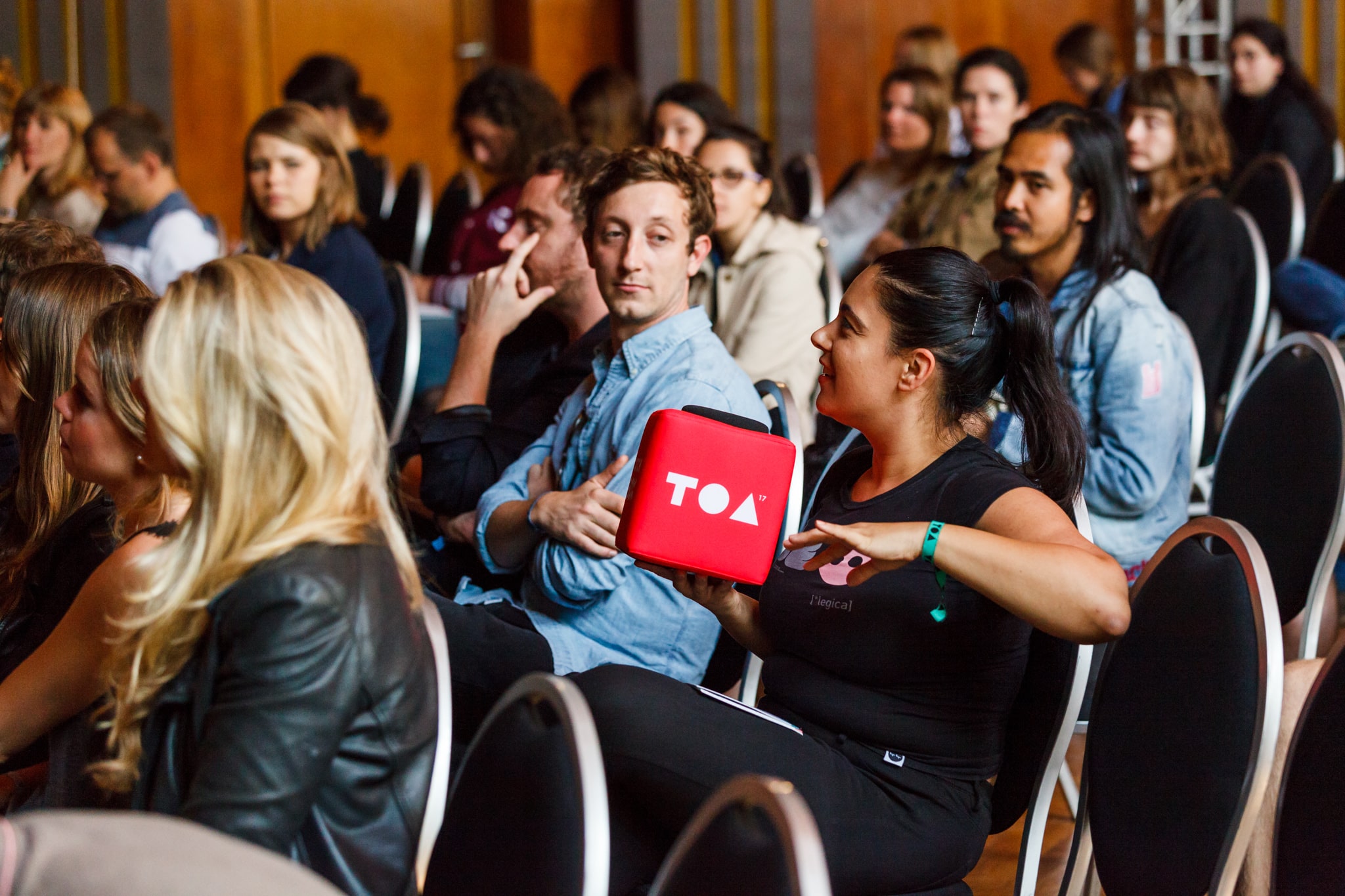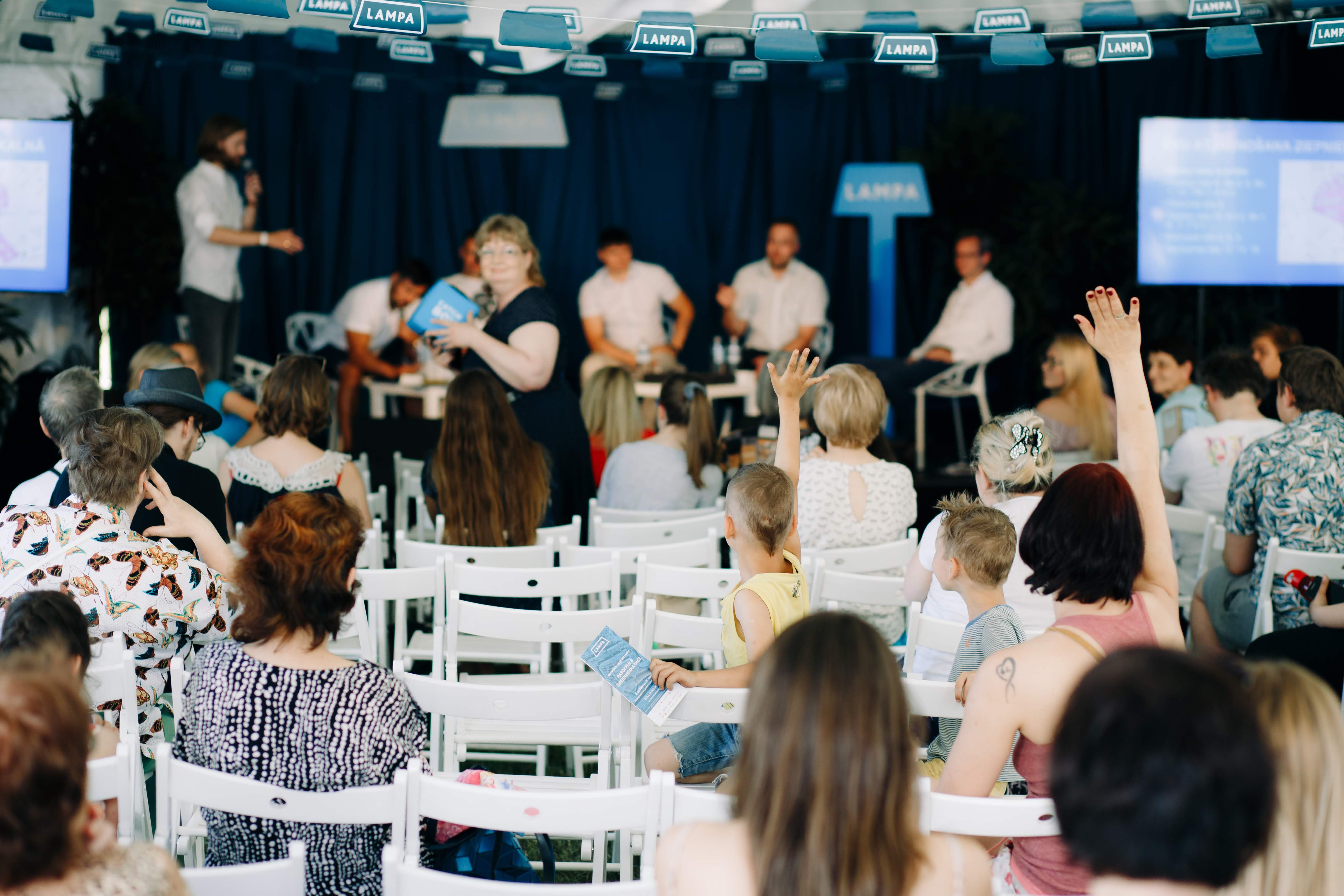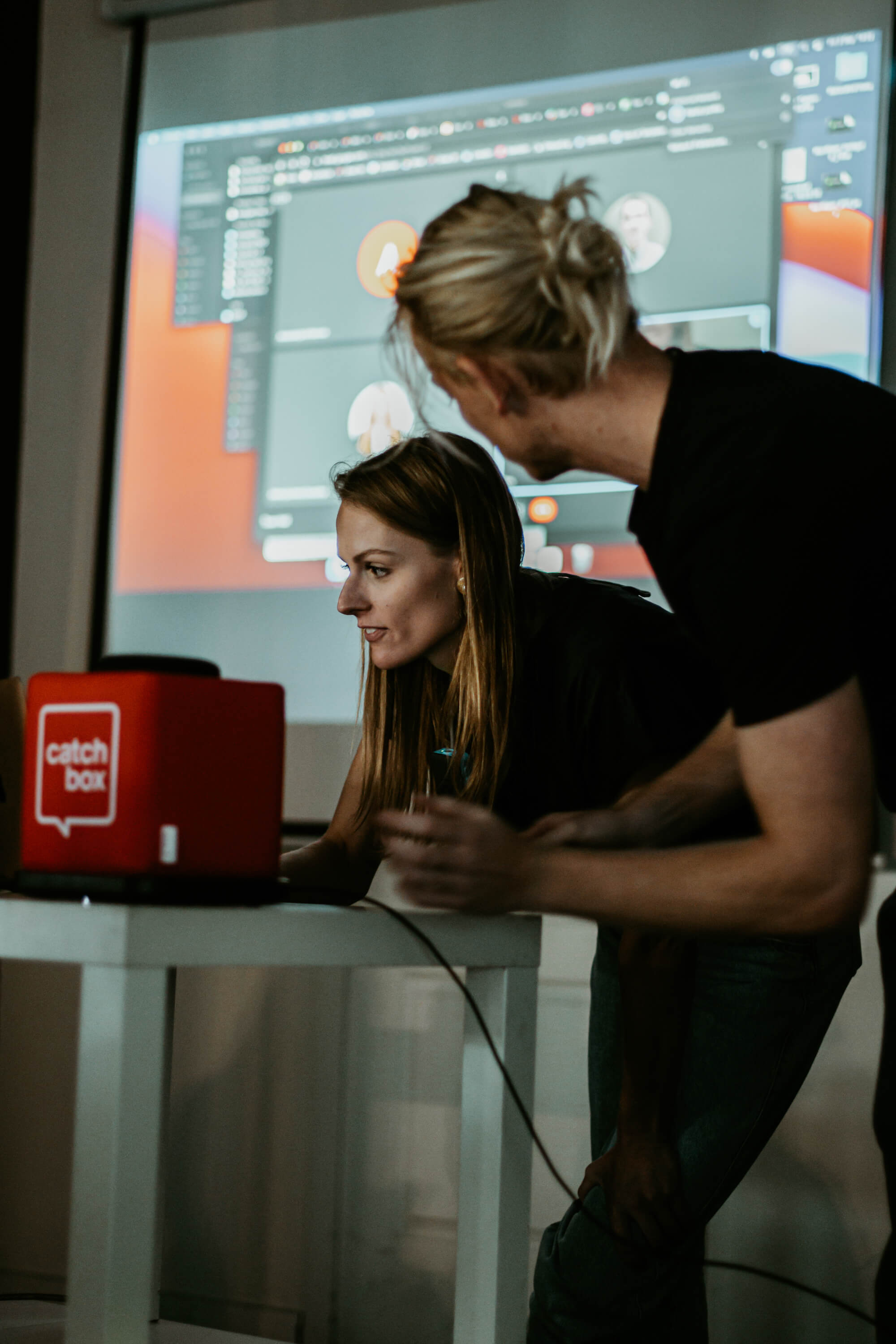6 things that kill event engagement in 2025 (and what to do instead)
Highly engaging events make for memorable experiences. Learn how to boost attendee satisfaction by avoiding common event planning pitfalls.

Edited on: January 2, 2025
Event engagement is difficult to get right because everyone has their own reasons for attending. Ask three different people why they attended an event, and you’ll probably get three completely different responses. You may hear answers like “to meet new people” or “to feel inspired.” And, chances are, at least one person will answer with a blunt “to get away from the office for a few hours (or days).”
But while the individual overall motivation for event attendance can vary a great deal from one person to another, you’re also bound to find at someleast one common thread. In fact, throughout the years there are two reasons for attendance that stand out above all others – learning and networking. With learning typically coming out on top, even as the event scene has completely changed following the rise of virtual and hybrid events.
A 2017 study revealed education was the top motivator for 92% of attendees. In Eventbrite's 2018 report, 93% of respondents said they attended events to learn something new. Whereas, a 2021 survey by Bizzabo found that the top reasons for attending virtual events were to gain knowledge (90%) and to stay up-to-date with industry trends (86%).
Clearly, as an event planner, facilitating learning experiences should be one of your key priorities. More learning means greater attendee satisfaction. Which makes them likelier to attend your next event and – perhaps – bring a colleague along.
Event engagement involves several moving parts. Great speakers, relevance, and interesting subject matter are a given. But there are also other aspects thatwhich, without careful planning, may derail the learning process.
With that in mind, in this article, we’ll run through 6 things that kill event engagement and show you what you can do to encourage it instead.
1. Not creating enough event engagement BEFORE the event
Having an active audience during the event itself is crucial. However, engaging your attendees beforehand is equally important. Learning doesn’t just happen because you’ve put your attendees in a room with a good speaker. Their minds have to be receptive to new knowledge to start with. You can do a lot of the groundwork for this in the run-up to the event.
What to do instead:
Creating engagement before the event builds a sense of excitement and anticipation. This will make your attendees more receptive to new knowledge from the get-go.
Here are two ways you can do this:
A. Create a segmented email campaign based on registration data
Email is a great engagement tool because it’s attention-grabbing. Where social media posts tend to get lost in people’s news feeds, an email sits there in their inbox; and it won’t go away unless they actively open it or click the delete button.
Of course, getting your attendees to open your emails is half the battle. Which is where segmentation comes in.
According to a study by MailChimp, email open rates are 14.31% higher when a campaign is segmented. Use this to your advantage by grouping your list according to the sessions they’ve signed up for. You can then send tailored content such as bite-sized background material, introductory videos or even signup suggestions for related sessions.
B. Use a survey tool to crowdsource questions or ideas for discussion
Asking attendees to come up with questions or to list specific issues they’d like to be tackled works on two levels:
Firstly, it gives them a say in the content, scope and overall direction of a session - this makes your attendees feel like active partners, rather than merely passive recipients of information.
And secondly, it makes personally valuable issues part of the discussion – we usually tend to take much more interest if something is directly relevant to our day-to-day lives, so this will make your attendees feel much more invested in your event’s outcome.
2. Not planning for speaker-audience interaction
You may have a fantastic line-up of speakers, but, if they're just lecturing the audience, attendees will start to zone out and miss out on valuable insights. As the day goes on, it gets increasingly difficult to adequately focus on each successive speaker and absorb knowledge.
Unless this is addressed, it can severely impact the learning experience at an event. Even though the content is fantastic and the learnings are there, people might walk away disappointed since they were either overwhelmed with information or simply incapable to stay focused for that long – and that's on you. As the event organizer, it's your responsibility to facilitate knowledge absorption as much as possible.
What to do instead:
While we all tend to absorb new knowledge differently, various studies have confirmed that there are certain things we can do to enhance the event engagement process. Firstly, interaction forces us to focus. This makes it easier to understand new information and to remember it in the long term. With this in mind, encourage your speakers to regularly field questions throughout their sessions, rather than blocking time for them at the end.
Consider adding subtitles to your introductory videos using tools like VEED's add subtitles to video feature. This will ensure that all attendees, including those who might have hearing impairments or language barriers, can understand the content and feel fully engaged.
Speakers could encourage interaction by using a clicker-style audience response system such as Data on The Spot to poll answers anonymously. Or, you can energize your attendees and make sessions more memorable by holding discussions and throwing Catchbox to whoever wants to contribute.
More to the point, according to Jerome Bruner’s Theory of Development, we tend to learn better and remember more if we discover knowledge for ourselves. So, one of the best ways to promote long-term engagement at your events is to use puzzles and other activities that require attendees to synthesize what they’ve learned and considered how they’d apply it in day-to-day situations.

3. Keeping the same pace throughout the event
Using back-to-back lectures as your primary method of information delivery also has another problem: it fails to account for the natural peaks and valleys in human concentration.
Researchers tend to disagree on how long is exactly too long. Some have found that attention tends to drop after about 52 minutes. On the other hand, Francesco Cirillo – creator of the Pomodoro Technique – found the human attention span to last closer to 25 minutes.
Irrespective of which theory you subscribe to, one thing’s for sure. Keep up the same pace for too long and you’ll lose your attendees’ attention, killing the event engagement process.
What to do instead:
The trick here is to work with your attendees’ attention span, not against it. Firstly, schedule time for warm-up activities instead of diving straight in. Call out a relevant word and get your attendees to free-associate. Or pose a hypothetical real-life problem and toss Catchbox to whoever wants to try their hand at solving it. These kinds of activity are a fun, attention-grabbing ways to ease your attendees into a session.
Sharing a joke or using the element of surprise at regular intervals is also a great way to get your attendees to refocus. As a plus, lightening the mood makes attendees feel good, which floods the brain with dopamine. This process has been shown to stimulate learning.
Finally, make sure to schedule regular breaks in which attendees aren’t exposed to any content at all. Regular downtime is just as important to learning as the sessions themselves because it gives the brain time to process information without overtaxing itself.
4. Getting the room layout wrong
Varying event engagement methods and pace will only take you so far. The learning environment itself has a positive or negative effect on your attendees’ emotions. In turn, this can influence their ability to learn and retain new knowledge. Many events tend to use a theatre-style layout, usually because it maximises the amount of space in which attendees can be placed. The flipside is that this kind of layout reinforces the idea of a passive audience, which discourages interaction.
However, putting your attendees on a table isn’t necessarily effective either. It may force some of them to crane their necks or strain to hear what’s going on, and the discomfort associated with paying attention may lead them to lose interest and switch off.
What to do instead:
Making a room’s layout work with your type of session does require some planning ahead. That said, it can have a hugely positive impact in terms of achieving learning goals, so the extra effort is worthwhile. Splitting your attendees into small groups or creating a living room-type setting, for instance, creates an informal atmosphere which encourages interaction. It also makes it easier for speakers to walk around, which makes them seem much more approachable than if you placed them on a stage.
Another alternative is the fishbowl technique, in that your attendees regularly switch between active participation and passive listening. This works particularly well with larger groups, because it makes the discussion more manageable by limiting the number of attendees who can talk at any given time.

5. Overloading the program
Have you crammed two days’ worth of activities into a half-day event? Or perhaps you’ve tried to get as wide a cross-section of speakers as possible involved? You might assume giving your attendees lots of choices and packing your sessions with information increases the opportunities for learning and makes your event more valuable. But this isn’t necessarily the case.
The brain is an organ, not a machine. All those different discussion panels and talks you’ve organised might create the illusion of learning. But you may be actually preventing real learning from happening by overloading your attendees with way more than they can handle.
What to do instead:
When it comes to learning new concepts, less is usually more. It’s better to focus on covering two or three topics in depth, instead of trying to be as comprehensive as possible in a short amount of time. You can choose which areas to focus on by brainstorming topics connected to the event’s overarching theme, then narrowing things down. Mind mapping is a really useful technique for doing this. Once you’ve decided on the key points you want your attendees to take home, you can design your event schedule around them.
In the words of Dr John Medina “The way to make long-term memory more reliable is to incorporate new information gradually and repeat it in timed intervals.” With this in mind, design your program so that different sessions build on each other, instead of flooding attendees with a huge pile of information all at once.
It’s also important to review key points regularly throughout the event by blocking out time for breakout sessions and other activities that reinforce new knowledge. The Edutopia blog has some great learning activity ideas you can use to achieve this.
6. Misusing the hybrid element
Since the pandemic, the popularity of hybrid events has skyrocketed and even in-person events now like to livestream their activities to reach broader audiences. It can seem like a great idea – with just a few cameras and microphones you can make your event accessible to people all over the world, easily capture content to reuse for marketing purposes, and generate more revenue from ticket sales.
However, organizers often underestimate the complexities of creating an engaging hybrid event. Suboptimal technology can lead to audio and video issues, remote audiences often find themselves neglected in favor of in-person ones, and it can be difficult to facilitate networking and communication between the different audiences and speakers.
A bad remote event experience can be a huge black mark even if the in-person event is spectacular.
What to do instead:
Treat the hybrid side of the event as part of it – not just an extension.
First and foremost, it's key to ensure a high-quality livestream to allow remote participants to be fully immersed in the event. This means not only ensuring that they can see and hear the speakers, but the audience too. For example, during Q&A sessions or any discussions with audience involvement, connected microphones should be provided to participants. This way remote attendees don't miss out on any valuable questions or talking points that come from other viewers. It will also make it easier for in-person participants to hear what's being asked.
In the same vein, remote attendees should also have the option to ask questions, which can be facilitated by using a suitable conferencing platform where they can post their questions in real-time. These can then be read out by the host. As a result, by involving the diverse experience of remote attendees, all participants benefit from a better learning experience.
It's also a good idea to involve remote audiences through the use of digital engagement tools. Things like real-time polls and quizzes can help keep both remote and in-person listeners on their toes and make them feel like they're truly part of the event. They're also invaluable tools for the speakers themselves to gauge how the audience is keeping up with the content and if anything needs to be explained better.
Create more engaging events
Some of the elements discussed in the article may seem self-evident, but you'd be surprised just how many events get them wrong. Often, these are the difference makers between a good event and a fantastic one.
That said, it's important to understand their impact. By analyzing event engagement, you can discover what works and what doesn't – and be better informed on what to focus on for the next edition. At the end of the day, every event is different and what works for one, might not for another. Still, you can't go wrong by placing the learning experience center stage and optimizing around it.
Recommended
Find out more

How to host a hybrid event
If you haven't done it before, organizing a hybrid event can seem like a daunting task. But with the right tools and guidelines, anyone can host a memorable and engaging hybrid event.

Catchbox for events
Intuitive, fun and easy to use, Catchbox mics encourage increased audience engagement by facilitating dynamic discussions and quickfire Q&A sessions.